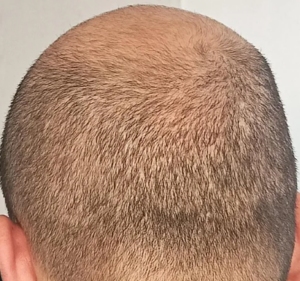I can’t see the front and top areas from the photo you supplied. Do you have any hair there now? First, you’ll need the doctor to evaluate your donor area to rule out any disease that may be there. Good doctors routinely perform trichoscopy to rule out diseases of the donor area and the metrics that I am about to discuss. You need metrics for your lifetime donor supply, which will include (1) donor density and (2) hair shaft thickness of the donor hairs. This will tell the surgeon what you will look like after the hair transplant, which will be shared with you. Then, a good surgeon will complete the examination by judging where your balding pattern will end up. Good planning is critical so you don’t expend all of your donor hair on a limited vision of where you are now. Balding is progressive, and you want to be sure that in the long term, you will always look normal and have enough hair left to follow the progressive nature of YOUR balding.
[If you have any questions, you can reach me at williamrassman33@gmail.com]

